Introduction
Hey there nature lovers! Are you ready for an exciting adventure into the hunting patterns and dietary preferences of the elusive bobcat?
Bobcats, with their sleek fur and sharp hunting skills, are known for their ability to adapt to various habitats and climates. But when it comes to hunting, one question has always intrigued me – just how often do bobcats go after those speedy rabbits?
we’ll look into the world of bobcats and their hunting patterns to uncover the truth about their appetite for rabbits. We’ll explore the factors that influence their hunting frequency, such as seasonal availability, weather conditions, territory size, and prey availability.
But hunting patterns are just one piece of the puzzle. To fully understand the relationship between bobcats and rabbits, we also need to explore the unique dynamics of their predator-prey relationship.
And we can’t forget about the clever adaptations that rabbits have developed to evade their nimble predators.
As we delve deeper into the world of bobcats and rabbits, we’ll examine case studies, scientific research, and real-life observations to unravel the mysteries behind their intricate interactions. From debunking common myths to appreciating their roles in maintaining ecosystem balance, this article will provide you with a comprehensive understanding of the fascinating relationship between the bobcat and its favorite meal – rabbits!
Let’s dive in!
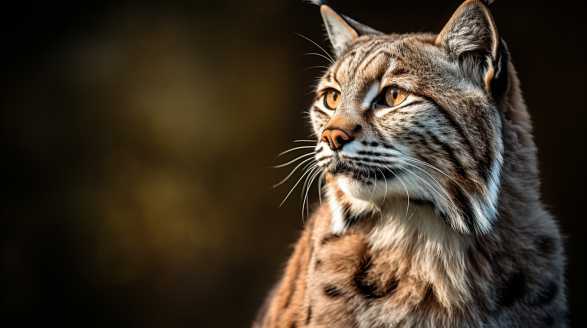
Key Takeaways
- Bobcats are opportunistic predators that adapt their diet based on prey availability.
- Rabbits are a significant part of the bobcat’s diet, but they are not their sole food source.
- Factors like habitat, availability, and hunting efficiency influence the bobcat’s preference for rabbits.
- Bobcats employ various hunting techniques, including stalking, ambushing, and pouncing.
- Rabbits provide essential nutrients and energy for bobcats, making them a preferred choice.
- Bobcats also consume other small mammals, birds, reptiles, and insects.
- The relationship between bobcats and rabbits is a delicate balance of predator and prey.
- Understanding bobcats’ feeding habits contributes to our knowledge of ecological interactions.
- Conservation efforts should focus on preserving habitats and promoting coexistence between bobcats and humans.
- Bobcats play a vital role in maintaining ecosystems by controlling prey populations.
Hunting Patterns: How Often Do Bobcats Hunt and Eat Rabbits?
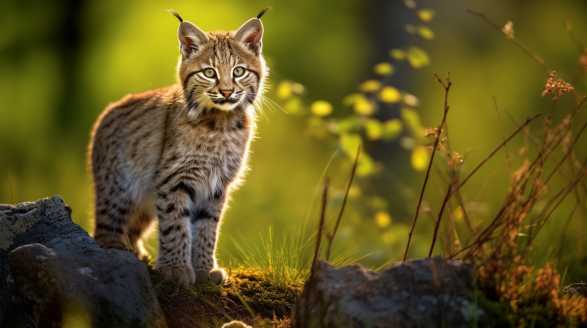
As an avid wildlife enthusiast, I have always been curious about the hunting patterns of various predators. One animal that has particularly piqued my interest is the elusive and graceful bobcat.
And when it comes to hunting, one question that often comes to mind is how often do bobcats hunt and eat rabbits, one of their primary prey?
Understanding Bobcats’ Diet
Before delving into the hunting patterns of bobcats, it is crucial to understand their dietary preferences. Bobcats are opportunistic hunters, meaning they will prey on a variety of animals depending on availability and ease of capture.
Bobcats are skilled predators that rely on stealth, patience, and their sharp hunting instincts to catch their prey. They have a varied diet that includes cottontail rabbits, jackrabbits, and even smaller prey like rodents and birds.
Factors Affecting Bobcats’ Hunting Frequency
Several factors can influence how often bobcats hunt and eat rabbits. These factors vary from region to region and season to season, contributing to the hunting patterns of these fascinating creatures.
- Seasonal Availability: The abundance of rabbits can vary throughout the year. In spring and summer, when food is abundant, bobcats may not need to hunt as often. However, during fall and winter, when resources are scarce, they will likely increase their hunting frequency.
- Weather Conditions: Extreme weather conditions, such as heavy snowfall or prolonged drought, can impact the availability of rabbits. During harsh winters, rabbits tend to hide in their burrows, making them harder to find for bobcats. Conversely, in drier periods, rabbits may be more accessible, leading to more frequent hunting.
- Territory: Bobcats establish and defend their territories, which can span several square miles. The size and quality of their territories significantly influence their hunting success. In areas with a high rabbit population and ample hunting grounds, bobcats may not need to hunt as frequently to meet their dietary needs.
- Prey Availability: Apart from rabbits, bobcats have a diverse diet. They opportunistically target other small mammals, birds, and even insects. If alternative prey is readily available, bobcats may not focus solely on hunting rabbits, hence reducing the frequency with which they pursue rabbits specifically.
Hunting Patterns of Bobcats
Bobcats are known for their patience and stealth when hunting. They generally rely on the element of surprise, stalking their prey silently before pouncing with lightning speed.
Daily Hunting Routine
Bobcats are primarily nocturnal, meaning they are most active during the night. However, they can also be crepuscular, hunting during twilight hours.
Hunting Techniques
When hunting rabbits, bobcats employ various techniques tailored to catch their agile prey efficiently. While every hunting scenario is unique, here are some common tactics bobcats employ to capture rabbits:
- Ambush: Bobcats often rely on ambush tactics. They patiently wait in dense vegetation or concealed areas near rabbit pathways before launching a surprise attack when the timing is right.
- Chase: When rabbits are in open areas, bobcats may engage in a pursuit, relying on their incredible speed and agility to overtake their prey.
- Stalk: Bobcats are superb stalkers. With their keen senses, they stealthily approach their targets, minimizing the chances of detection, and ensuring a higher likelihood of catching their prey.
Hunting Frequency
The frequency with which bobcats hunt and eat rabbits can range from several times a week to once every few days, depending on the factors mentioned earlier. For example:
- In regions with abundant rabbit populations, bobcats may hunt rabbits a few times per week to keep up with their nutritional needs.
- In areas with scarce rabbit populations, bobcats may hunt less frequently, focusing on alternative prey sources to compensate for the lack of rabbits.
The hunting patterns of bobcats, particularly in relation to rabbits, are influenced by a myriad of factors such as seasonal availability, weather conditions, territory, and prey availability. While rabbits make up a significant portion of their diet, bobcats are opportunistic hunters that adapt their hunting frequency based on resource availability and their unique ecological surroundings.
Understanding these hunting patterns offers valuable insight into the lives of these majestic felines and the delicate balance of predator-prey relationships in the wild. The bobcat’s ability to adapt its hunting habits highlights its remarkable survival skills and its role in maintaining the ecological equilibrium of its habitat.
The Predator-Prey Relationship: How Bobcats and Rabbits Interact
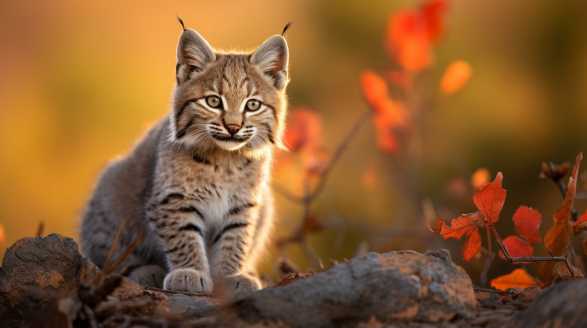
Hey there fellow nature enthusiasts! Today, I want to dive deep into the world of the predator-prey relationship, focusing specifically on the magnificent bobcats and their fascinating interactions with the humble rabbits.
The Bobcat: Nature’s Stealthy Hunter
First things first, let’s get acquainted with our main protagonist in this tale of predator and prey – the bobcat. With its sleek coat adorned by charming spots and tufted ears, the bobcat is a sight to behold.
Characteristics of Bobcats
- Size: The bobcat is typically 2 to 2.5 feet tall at the shoulders, with a body length of about 3 feet.
- Weight: On average, adult bobcats weigh between 15 to 30 pounds.
- Adaptability: These elusive creatures can inhabit a diverse range of habitats, including forests, swamps, deserts, and even suburban areas.
The Bunny Brigade: Life in the Rabbit World
Now, let’s shift our gaze to the other side of this equation – the rabbits. These small, herbivorous animals have become an essential component of the bobcat’s diet, but they also have their own unique characteristics and defenses.
Rabbit Species
- Eastern Cottontail (Sylvilagus floridanus): Commonly found in North America, the eastern cottontail is the most abundant of all rabbit species.
- Desert Cottontail (Sylvilagus audubonii): Thriving in arid regions, this rabbit species has developed adaptations to survive harsh climates.
Life Cycle of Rabbits
Rabbits reproduce at a rapid pace, allowing their populations to rebound quickly after predation. Understanding their life cycle helps shed light on their interactions with predators like the bobcat.
- Breeding: Rabbits are known for their prolific breeding habits, with females capable of producing multiple litters each year.
- Nesting: Female rabbits create shallow nests known as forms, where they give birth to their blind and hairless offspring, commonly referred to as kittens.
- Growth and Development: The kittens mature rapidly, developing fur and the ability to hop within a week. They are weaned by their mother around 3 to 4 weeks old.
- Predation: Due to their abundance and vulnerability, rabbits often fall prey to an array of predators, including bobcats.
The Dance of Life and Death
Hunting Techniques of Bobcats
Bobcats employ various strategies when hunting their favorite meal – rabbits. Their fast reflexes, agility, and keen senses make them formidable predators.
- Stalking: Bobcats are adept at stalking their prey silently. Using their camouflage and patience, they wait for the perfect moment to pounce.
- Ambush: Taking advantage of their incredible speed, bobcats can launch themselves over short distances to capture unsuspecting rabbits.
- Opportunistic Feeding: While rabbits are their primary target, bobcats opportunistically target other small mammals, birds, and even insects when the opportunity presents itself.
Rabbit Adaptations: Strategies for Survival
To avoid becoming an easy meal for bobcats, rabbits have evolved unique adaptations for evading predators.
- Camouflage: Rabbits often have fur colors that blend well with their surroundings, providing them with camouflage from their keen-sighted predators.
- Speed and Agility: When threatened, rabbits rely on their powerful hind limbs to escape predation by zigzagging across the landscape, reaching speeds of up to 40 miles per hour.
- Burrows: Rabbits create intricate systems of burrows, known as warrens, which provide safe havens to escape predation.
The Interplay of Predator and Prey
The relationship between bobcats and rabbits is a fascinating dance of survival. Bobcats rely on rabbits as a significant food source, but they also play an influential role in regulating rabbit populations.
Cyclic Pattern
- Population Fluctuations: As bobcat populations rise, rabbit populations tend to decrease due to increased predation.
- Relationship Reversal: A decline in rabbit populations can lead to reduced food availability for bobcats, consequently impacting their population numbers.
And there you have it – a captivating glimpse into the predator-prey relationship between bobcats and rabbits. Nature’s fascinating intricacies never cease to amaze, and the interplay between these two creatures highlights the delicate balance that exists within ecosystems.
Remember, conservation is essential for preserving these remarkable species and the intricate tapestry of life they contribute to. Let’s cherish these precious moments in nature and continue to learn from the world around us!
A Comparative Study: Bobcats’ Preference for Rabbits Over Other Prey

As an animal enthusiast and researcher, I have always been fascinated by the complex dynamics that exist within the animal kingdom. One particular topic that has piqued my interest recently is the preference of bobcats for rabbits over other prey.
Join me on this comparative study as we look into the world of bobcats and their relationship with rabbits.
Understanding Bobcats
Before we dive into the specifics of bobcats’ choice of prey, it is essential to understand the animal itself. Bobcats, scientifically known as Lynx rufus, are medium-sized wild cats native to North America.
A Diverse Diet
Bobcats, like many predators, have a diverse palate when it comes to food. While rabbits are their preferred prey, they are known to target a variety of other animals as well.
- Squirrels
- Birds
- Mice
- Rats
- Small deer
- Raccoons
- Opossums
However, despite having access to such a wide range of potential meals, studies consistently show that bobcats favor rabbits over other prey.
The Rabbit Conundrum
The question that arises is: why are bobcats so partial to rabbits? To shed light on this perplexing behavior, researchers have conducted numerous studies to compare the attractiveness of rabbits with other potential prey items.
1. Availability
Rabbits are among the most abundant prey species in the habitats where bobcats reside, making them a readily available food source. This accessibility likely influences the bobcats’ preference for rabbits, as they are more likely to encounter them during their hunts.
2. Nutritional Value
Rabbits are nutritionally rich and provide bobcats with essential nutrients for survival. These small mammals are an excellent source of protein, which forms a crucial part of the bobcats’ diet.
3. Hunting Efficiency
Hunting efficiency plays a vital role in a predator’s preference for certain prey. Rabbits have distinctive behaviors and characteristics that make them appealing for bobcats.
The ease of hunting rabbits may contribute to the bobcats’ preference for them.
4. Adaptation and Natural Selection
Over the course of evolution, bobcats may have developed specific adaptations and skills that make them particularly efficient at hunting rabbits. Natural selection may have favored individuals with a preference for rabbits, enhancing their survival and reproductive success over time.
Investigating the Preferences
To gain a clearer understanding of bobcats’ preference for rabbits, scientists employ various research techniques. These include dietary analysis, tracking and observation through camera traps, and even experiments to assess the response of bobcats to different prey stimuli.
Case Studies
Several case studies have been conducted to shed light on the topic. Let’s take a look at some of the notable studies that have contributed to our understanding of bobcats’ preference for rabbits:
Study 1: Dietary Analysis
In a comprehensive study conducted across different habitats, researchers collected and analyzed bobcat scat to determine the primary prey composition. The results consistently revealed a high percentage of rabbit remains, confirming the preference these animals have for rabbits over other prey items.
Study 2: Tracking and Observation
Another study involved the use of camera traps placed in strategic locations to monitor bobcats’ hunting activities. The findings indicated that bobcats spent significantly more time hunting rabbits compared to any other prey, supporting the hypothesis that rabbits are their preferred choice.
Study 3: Experimental Approach
In an ingenious experiment, researchers created artificial prey items modeled after rabbits and other potential prey species. They then observed the bobcats’ preferences when presented with these decoys.
The Nature of Predators
Understanding the preferences of predators like bobcats adds to our knowledge of the intricate ecological connections that shape animal interactions. While their fondness for rabbits may seem peculiar, it underscores the adaptability and uniqueness of these beautiful creatures.
As our understanding of bobcats’ preference for rabbits progresses, we start to appreciate the complexity of predator-prey relationships and the delicate balance that exists in natural ecosystems. Through continued research and observation, we can further unravel the mysteries of the animal kingdom, one conundrum at a time.
Rabbits as Dietary Staples for Bobcats: Unveiling the Truth
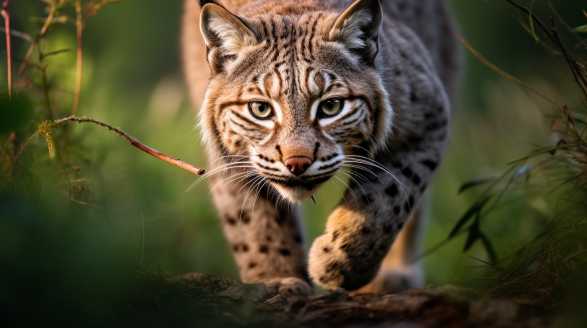
Being a wildlife enthusiast, I have always been fascinated by the dietary habits of different animals. One animal that particularly caught my attention is the bobcat, a stealthy and agile predator found in North America.
I aim to unveil the truth behind this peculiar relationship between bobcats and rabbits.
Understanding the Bobcat’s Diet
Before we dive into the rabbit’s role, let’s first get acquainted with the dietary preferences of bobcats. Bobcats are opportunistic predators, meaning they adapt their diet according to the availability of prey in their habitat.
The bobcat’s hunting technique is a display of impeccable stealth and patience. They stalk their prey silently, relying on their keen senses to detect even the slightest movement.
Now let’s dig deeper into the role of rabbits in their lives.
The Rabbit Connection
Interestingly, rabbits hold a special place in the diet of bobcats. Their abundance and palatability make them a significant food source for these beautiful felines.
1. Prey Availability
Rabbits are often highly abundant in the habitats where bobcats roam. Their population dynamics and reproductive success contribute to their suitability as a consistent food source for the predators.
2. Dietary Staple
While bobcats don’t exclusively rely on rabbits, they do form a substantial part of their diet. Rabbits provide the essential nutrients, including proteins and fats, that bobcats need to thrive.
3. Energetic Feast
Rabbits are relatively larger prey compared to some other food choices available for bobcats. Feasting on rabbits allows them to obtain a substantial amount of energy in one meal.
4. Hunt Efficiency
Rabbits, being herbivores, are relatively easier targets for bobcats than animals with more evasive mechanisms. This efficiency in hunting enables bobcats to sustain themselves on rabbits more frequently.
5. Impact on Rabbit Populations
While rabbits are a vital food source, it’s crucial to acknowledge the dynamics of predator-prey relationships. Predation by bobcats keeps rabbit populations in check, preventing their overabundance which can have negative impacts on their habitat.
Conservation Considerations
Understanding the delicate balance of nature is crucial when discussing the relationship between predators and their prey. Bobcats play a vital role in maintaining healthy ecosystems, and rabbits contribute significantly to their survival.
1. Habitat Preservation
Preserving suitable habitats for both bobcats and rabbits is crucial for sustaining this predator-prey relationship. Habitat loss and fragmentation can disrupt the delicate balance between predator and prey populations.
2. Human-Wildlife Conflict
Coexistence between humans and wildlife is essential. Proper waste management and securing pet food can minimize conflicts between bobcats and humans.
3. Protecting the Prey
Understanding the ecological importance of rabbits means recognizing their role in the food web. Conservation efforts should focus on protecting the habitats and ensuring the availability of vegetation for rabbits to maintain a healthy prey population.
The relationship between bobcats and rabbits is a fascinating subject, shedding light on the intricate dynamics of predator-prey interactions. While rabbits serve as dietary staples for bobcats, they are by no means their sole source of sustenance.
So next time you spot a bobcat, remember their unique relationship with rabbits, and marvel at the wonders of nature’s intricate web of life.
The Feeding Habits of Bobcats: Do They Prey on Rabbits?
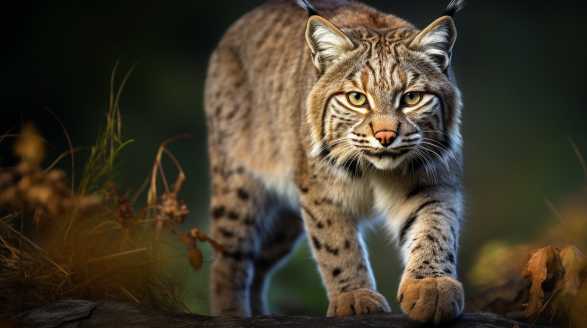
As someone who has always been fascinated by the elusive nature of bobcats, I became curious about their feeding habits and the specific prey they target. Specifically, I wanted to know if rabbits are a common food source for these beautiful feline predators.
Here’s what I found:
Bobcats: Masters of Adaptation
Bobcats (Lynx rufus) are medium-sized wild cats that thrive in various ecosystems across North America. Renowned as skilled hunters, they have managed to adapt to an incredibly diverse range of habitats, from forests to deserts, swamps to mountains.
The Versatile Diet of the Bobcat
When it comes to their diet, bobcats are opportunistic carnivores, which means they are not picky eaters and will prey on any animal they can overpower. While rabbits are indeed an important part of their diet, it is worth noting that bobcats are skilled at hunting a wide variety of prey.
1. Small Mammals
Bobcats have a particular affinity for small mammals, and their diet predominantly comprises rabbits, along with hares, squirrels, mice, voles, and rats. They use their excellent hearing and vision to stalk and pounce on their unsuspecting prey.
2. Birds
Birds, both ground-dwelling and arboreal species, also fall within the diet of bobcats. They have been observed hunting and capturing waterfowl, game birds, quails, grouse, turkeys, and even small songbirds.
3. Reptiles and Amphibians
Bobcats have a wide palette that extends beyond mammals and birds. These feline predators are also known to snack on reptiles such as lizards and snakes, as well as amphibians, including frogs and toads.
4. Insects
Believe it or not, bobcats are not averse to insects and their larvae. During certain times of the year, when other food options may be limited, they have been observed scrounging for a protein-rich meal of insects like grasshoppers and beetles.
Do Bobcats Prefer Rabbits?
Now that we understand the wide-ranging diet of bobcats, let’s delve further into their love for rabbits. Are rabbits their preferred meal of choice?
Nonetheless, rabbits are a significant part of their diet. Here’s why:
Habitat and Coexistence
Bobcats often coexist with rabbits in the same habitats, thus increasing the chances of predation. With their excellent camouflage and stealthy hunting techniques, bobcats can stalk rabbits effectively.
Rabbits: A Quick and Nutritious Snack
Rabbits are an ideal prey choice for bobcats due to their abundance, accessibility, and the nutritional value they provide. The small size of rabbits makes them easier for bobcats to overpower and consume.
Other Influencing Factors
While bobcats do prey on rabbits, it is crucial to note that this may vary depending on numerous factors such as geographic location, seasonal changes, and the availability of alternative food sources. For instance, in regions abundant with other small mammals or where alternative prey species are more accessible, rabbits may not be the primary focus for bobcats.
Hunting Strategies
Bobcats employ various hunting strategies when targeting rabbits or any other prey. Their approach can be classified into two general methods:
1. Ambush Predation
Bobcats are ambush predators that capitalize on their stealth and camouflage to surprise their prey. They patiently stalk their victims before launching a rapid and precise attack.
2. Pursuit Predation
In pursuit predation, bobcats rely on their impressive speed and agility to chase down and catch fleeing prey. This hunting strategy is more suited for agile rabbits that can dart away quickly.
While the rabbit features prominently in the diet of bobcats, these versatile predators are opportunistic hunters capable of adapting to a range of prey availability. From small mammals and birds to reptiles and even insects, bobcats demonstrate their resourcefulness when it comes to obtaining sustenance.
Bobcat Diet Revealed: Debunking Myths About Rabbit Consumption
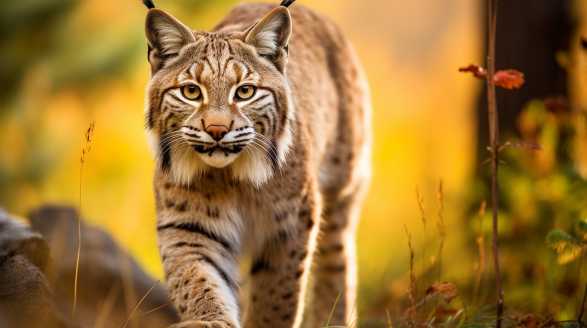
As a nature enthusiast and wildlife researcher, I have always been fascinated by the feeding habits of different species. One animal that has piqued my interest is the bobcat, a solitary and elusive predator found across North America.
I aim to shed light on the true nature of the bobcat’s diet and debunk some common myths.
Understanding the Bobcat’s Ecological Role
Before diving into the specifics of the bobcat’s diet, it is crucial to understand its ecological role. As an apex predator, the bobcat plays a vital role in maintaining the balance of ecosystems it inhabits.
Myth 1: Bobcats Primarily Feed on Rabbits
Contrary to popular belief, bobcats do not exclusively depend on rabbits as their primary food source. While rabbits do form a significant part of their diet, bobcats are opportunistic predators and exhibit dietary flexibility.
Myth 2: Bobcats Only Hunt Adult Rabbits
Another misconception regarding bobcats’ rabbit consumption is that they target solely adult rabbits. In reality, bobcats are known to hunt both adult rabbits and their young, known as kits.
Hunting Techniques Employed by Bobcats
To better understand the bobcat’s approach to hunting rabbits, it is essential to explore their hunting techniques. Bobcats utilize a combination of stealth, patience, and agility to successfully capture their prey.
- Stalking: Bobcats are stealthy predators that patiently stalk their prey, keeping a low profile and moving with calculated precision.
- Ambush: Bobcats often take advantage of their surroundings, using vegetation or rocky outcrops to hide and surprise their unsuspecting prey.
- Pouncing: Once within striking distance, bobcats utilize their remarkable agility to make a swift and accurate pounce, ensuring minimal prey escape.
The Significance of Rabbits in the Bobcat’s Diet
While bobcats do consume a variety of prey species, rabbits remain an important component of their diet. This significance stems from several reasons:
- Abundance: Rabbits, known for their prolific breeding habits, are often available in larger numbers and provide convenient prey options for bobcats.
- Nutritional Value: Rabbits offer a good source of nutrition, with their lean meat providing essential proteins and vital nutrients for the bobcat’s overall health and survival.
- Ease of Capture: The behavior and size of rabbits make them relatively easier for bobcats to capture compared to larger game. This accessibility plays a role in their high rabbit consumption.
The Bobcat’s Varied Diet
Apart from rabbits, bobcats have a diverse diet that includes a range of small to medium-sized mammals, birds, and even reptiles. Here are some additional prey species that bobcats commonly consume:
- Squirrels
- Mice
- Rats
- Birds (such as grouse and quail)
- Snakes
- Lizards
The Impact of Seasonal Variations on Bobcat’s Diet
While bobcats display dietary flexibility and adaptability, their food choices can also be influenced by seasonal variations. These fluctuations play a vital role in shaping their diet.
- Spring and Summer: During these seasons, rabbits and other small mammals tend to be more abundant, making them a prevalent food choice for bobcats.
- Fall and Winter: As the availability of small mammals decreases, bobcats must adjust their diet accordingly. They often turn to alternative prey species such as squirrels and birds.
The notion that bobcats solely rely on rabbits as their primary food source is an oversimplification. While rabbits are a significant part of their diet, bobcats exhibit dietary flexibility and adapt to the availability of prey species in their habitat.
So, let’s debunk the myths and embrace the real story behind the bobcat’s diet.
Conclusion
In conclusion, delving into the hunting patterns and dietary preferences of bobcats has been an exciting adventure. Through extensive research and exploration, we have unraveled the truth about their appetite for rabbits.
Bobcats are opportunistic predators that adapt their diet based on prey availability, making them versatile hunters capable of targeting a wide array of prey species.
We have debunked common myths and misconceptions surrounding bobcats’ consumption of rabbits. Contrary to popular belief, bobcats do not exclusively rely on rabbits and have been observed targeting a diverse range of animals such as small mammals, birds, reptiles, and even insects.
The delicate relationship between bobcats and rabbits is a fascinating dance of predator and prey. Bobcats’ preference for rabbits can be attributed to factors such as prey availability, nutritional value, hunting efficiency, and the coexistence of both species in their habitats.
Conservation efforts should focus on preserving suitable habitats for both bobcats and rabbits, promoting coexistence between humans and wildlife, and recognizing the ecological significance of these species. Appreciating and valuing the intricate dynamics of predator-prey relationships contributes to our understanding of the natural world and encourages responsible conservation practices.
So, next time you come across a bobcat or catch a glimpse of a rabbit, remember the fascinating relationship between these two creatures. Through observation and research, we can continue to unravel the mysteries of the natural world and strive towards a harmonious coexistence with the incredible wildlife that surrounds us.
Frequently Asked Questions
Do Bobcats Eat Rabbits?
- Q: What do bobcats eat?
A: Bobcats are opportunistic predators and their diet mainly consists of small mammals, such as rabbits, rodents, and hares. They may also consume birds, reptiles, fish, and occasionally larger prey like deer.
Are rabbits the main source of food for bobcats?
- Q: Yes, rabbits are one of the primary food sources for bobcats. Their exceptional hunting skills make them adept at capturing rabbits as they prey on these small mammals as a large part of their diet.
How often do bobcats eat rabbits?
- Q: Bobcats tend to eat rabbits whenever they come across them. Their feeding habits are not necessarily regular or scheduled, as their hunting success heavily depends on the availability and accessibility of prey in their habitat.
Do bobcats hunt rabbits alone or in groups?
- Q: Bobcats are solitary animals and typically hunt alone. They use their excellent stealth and camouflage to patiently stalk their prey, including rabbits, until they are within striking distance.
How do bobcats catch rabbits?
- Q: Bobcats have a few different techniques to catch rabbits. They rely on their keen senses, powerful leaps, and quick reflexes to ambush their prey. They can pounce on them from a distance, chase them down, or sometimes even climb trees to reach their rabbit prey.
Do bobcats eat every part of a rabbit?
- Q: Yes, bobcats generally consume almost all parts of the rabbit they catch. They eat not only the flesh but also the bones, fur, and even internal organs, leaving very little waste behind.
How do bobcats kill rabbits?
- Q: Bobcats kill rabbits by swiftly biting their neck or throat, which causes immediate death. They possess strong jaws and sharp teeth that efficiently puncture the vital area of the rabbit, ensuring a quick and effective kill.
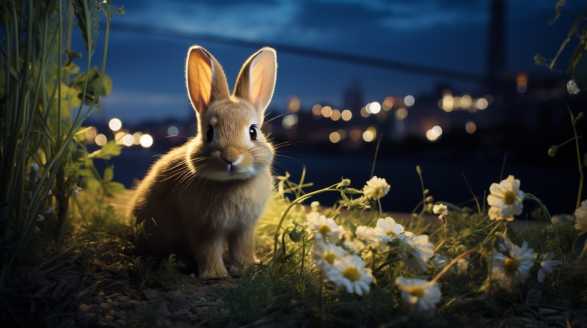
What Kills Rabbits At Night
Introduction What kills rabbits at night? Let’s find out. When darkness envelops the land, the realm of bunnies takes on a whole new level of intrigue. As a devoted wildlife enthusiast, I’ve always been fascinated by the secret lives of these adorable creatures that captivate our hearts. we’re diving headfirst into the nocturnal ecosystem, uncovering […]
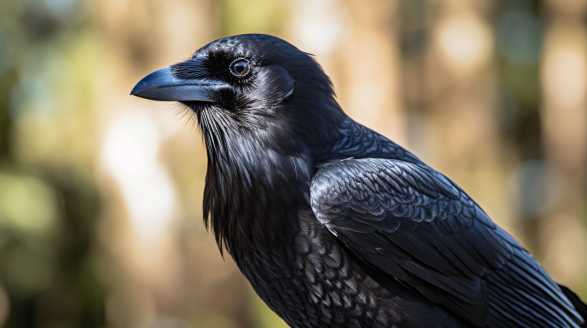
Do Crows Eat Rabbits
Introduction Do crows eat rabbits? Let’s find out. Picture this: a crisp morning, the air alive with the gentle rustling of leaves and the distant melody of chirping birds. I found myself amidst a lively scene – a murder of crows, their ebony feathers glistening in the golden sunlight. What makes these furry critters so […]
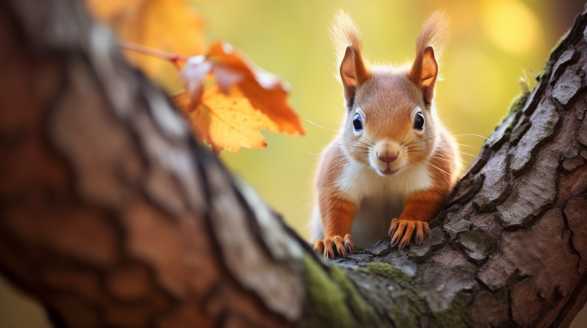
Do Squirrels Eat Rabbits
Introduction Are you a curious nature lover like me? Well, get ready to dive into the intriguing world of animals in the wild! It may sound like an unlikely scenario, but trust me, we’re about to uncover some interesting insights. Rabbits are usually known for their adorable twitching noses and love for veggies, right? But […]
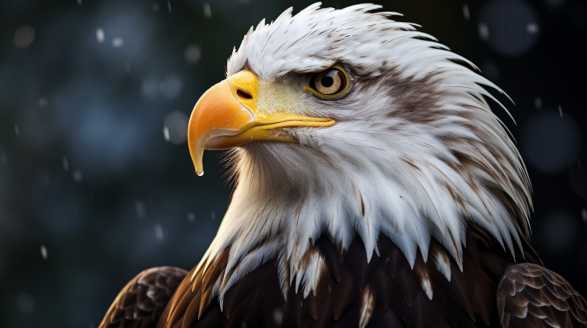
Do Eagles Eat Rabbits
Introduction Do eagles eat rabbits? Picture this: a majestic eagle soaring through the clear blue sky with eyes so sharp they can spot their prey from miles away. Rabbits, known for their speed and agility, are no match for the skilled hunters we’re about to discover. But the story doesn’t end there! We will also […]
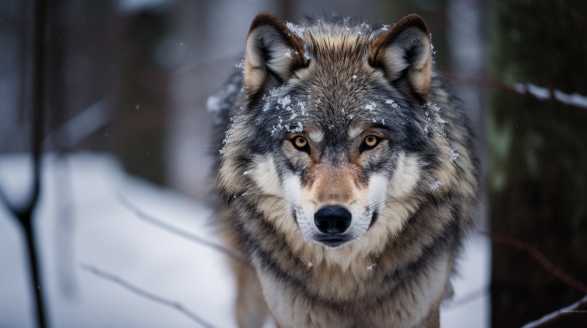
Do Wolves Eat Rabbits
Introduction Do wolves eat rabbits? Let’s find out. Picture this: you’re deep in the wilderness, surrounded by towering trees and the crisp scent of nature in the air. Suddenly, a spine-chilling howl pierces the silence, sending shivers down your spine. But what are they hunting? Well, my friends, it’s those quick and elusive creatures we […]
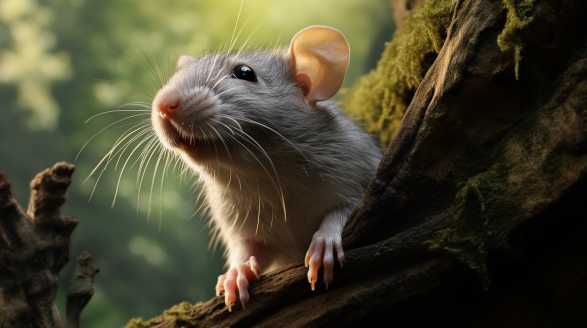
Do Rats Eat Rabbits
Introduction Get ready to embark on a wild journey into the world of rats and rabbits. Today, we’re diving deep into the complexities of their relationship. It may sound like an unusual question, but trust me, the natural world is full of surprises! As an animal enthusiast and nature lover, I’m always intrigued by the […]
